#Cristina Cottrelli
Explore tagged Tumblr posts
Text
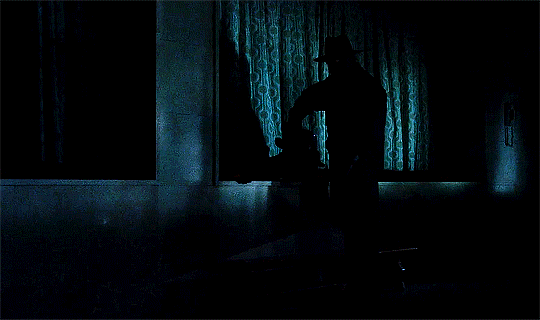

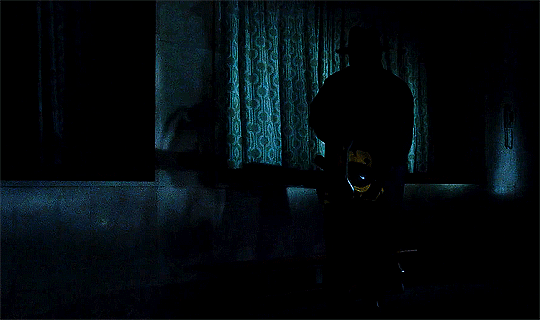
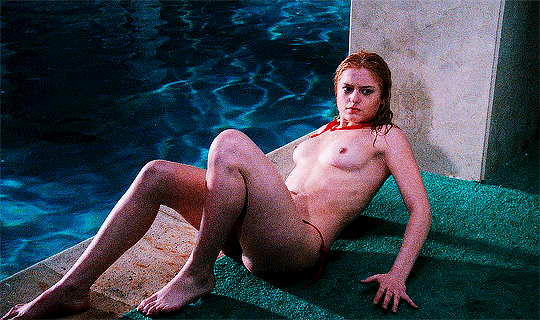
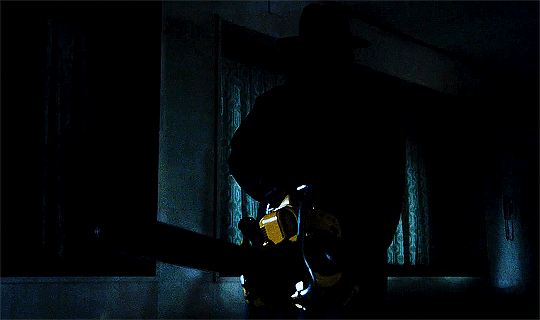


Pieces (1982) dir. Juan Piquer Simón
#pieces#filmedit#classichorrorblog#horroredit#my gifs#movies#chainsaws#horror#horror movies#1980s#cristina cottrelli#juan piquer simon
141 notes
·
View notes
Text
Pieces (1982) (AKA Mil gritos tiene la noche)
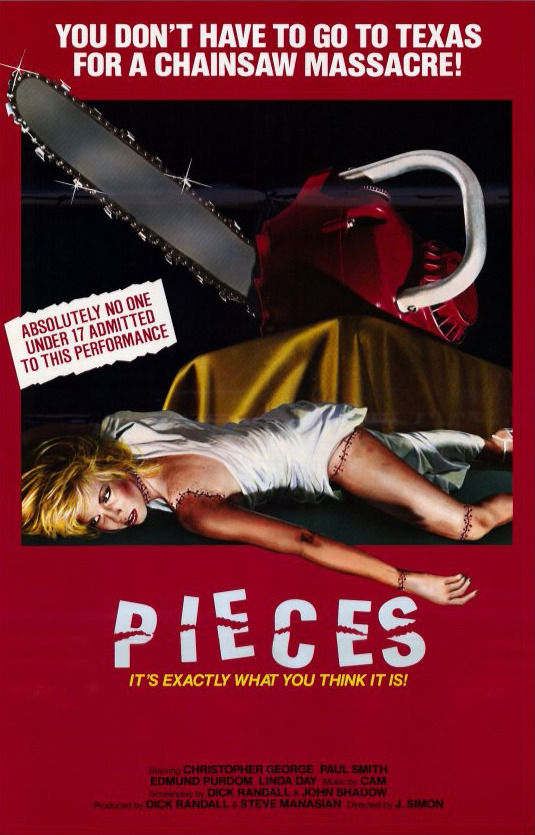
Directed by Juan Piquer Simon
Screenplay by Dick Randall and Roberto Loyola (as John Shadow)
Music by Librado Pastor (Spanish version) or Stelvio Cipriani, Carlo Maria Cordio, Stephen Ham, Alain Leroux, Fabio Frizzi, Enrico Pieranunzi and Silvano Chimenti (International version)
Country: Italy, Spain
Running Time: 89 minutes
CAST
Christopher George as Lt. Bracken
Linda Day as Mary Riggs
Frank Braña as Sgt. Holden
Paul L. Smith as Willard
Edmund Purdom as The Dean
Ian Sera as Kendall James
Jack Taylor as Professor Arthur Brown
Isabelle Luque as Sylvia Costa
Gérard Tichy as Doctor Jennings
Hilda Fuchs as Grace, the Secretary
May Heatherly as Mrs. Reston
Alejandro Hernández as Timmy Reston
Roxana Nieto as Virginia Palmer, First Victim
Cristina Cottrelli as Jenny, Pool Victim
Leticia Marfil as Suzie, Locker Room Victim
Silvia Gambino as Mary, Elevator Victim
Carmen Aguado as Carla, Aerobics Instructor
Paco Alvez as Alister Schwartz
(Guilt Bleat: Seriously, how could anyone pause to take screengrabs while watching this...unique creation. So off to IMDB I went.)
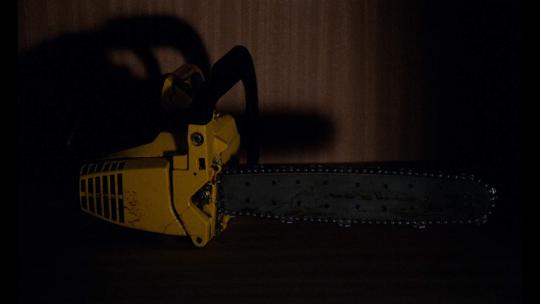
Pieces is a legendarily terrible Spanish slasher flick. Pieces is a tremendously enjoyable Spanish slasher flick. If you think those two statements should be mutually exclusive then stay away from Pieces, which, uh, is a Spanish slasher flick. You have been warned.
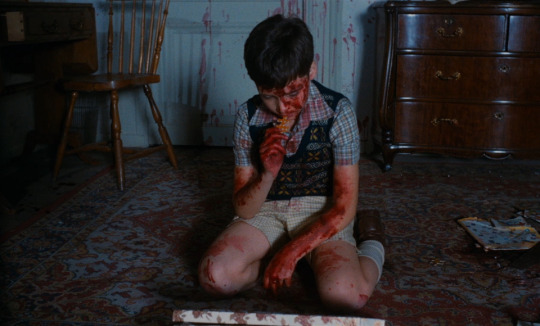
Pieces sets out its tawdry stall early, erupting busily into action with a riff on the opening scene of Deep Red (1975). The latter was stylish, restrained and chillingly suggestive whereas Pieces’ opening is…very much not. Starting as it means to go on Pieces thunders into life with an oafishly crude start involving a nudey jigsaw, matricide by axe and a couple of Keystone Cops. Somehow, by some inexplicable cinematic alchemy, this laughably squalid business is enlivened by a kind of feral energy which never entirely dissipates over the following eighty-blah minutes, despite the unarguable terribleness of the movie. This, I think, is the key to Pieces’ successful bypassing of any finer sensibilities you may mistakenly believe you possess - the maniacal gusto with which it assaults the slasher flick formula. Sometimes Pieces is so bad it’s funny, but not as often as you think; sometimes it’s funny how bad it is and yet…and yet, ridiculously, it somehow works. Which is to say, I enjoyed it but I’m not proud of that.
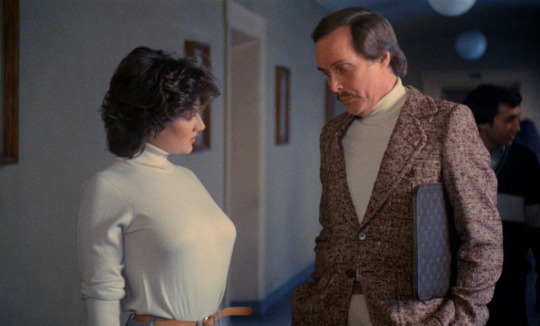
In 1942 a young boy playing with his absentee father’s porny jigsaw is surprised by his uptight and highly agitated mother. The short-trousered scamp surprises her in turn by axing her in the head and dismembering her corpse with a hacksaw. When the police turn up he tells them a bad man did it and ran away; they believe him because, hey, why would you not? Case closed. Whoosh! 40 years pass! And, as so often happens, a girl roller skates into a pane of glass, triggering the killer’s dormant psychosis. Suddenly the peace of a college campus in Boston (an area in American where no one speaks English, apparently) is smashed in the face by a hammer made of flamboyantly violent murders. Murder having a detrimental effect on any educational establishment’s reputation, the Dean (Edmund Purdom; prissy) keeps things on the QT and very, very hush-hush, while Lt. Bracken (Christopher George; distracted) attempts to catch the killer, mainly by wandering about angrily with an unlit cigar in his mouth. This proves an unfruitful approach and more young women are butchered in scenes which seem to take an unseemly pleasure in the ridiculous splatter on show. Cunningly Bracken employs student babe-magnet Kendall James (Ian Sera; ridiculously unsexual in a knitted Starsky & Hutch jumper affair) and ex-tennis champion cum police detective Mary Riggs (Linda Day; not very good at tennis) to make undercover enquiries, unfortunately they find this places them in the deadly path of the killer. Can the killer be brought down before he completes his insane aim of creating a jigsaw of human parts?
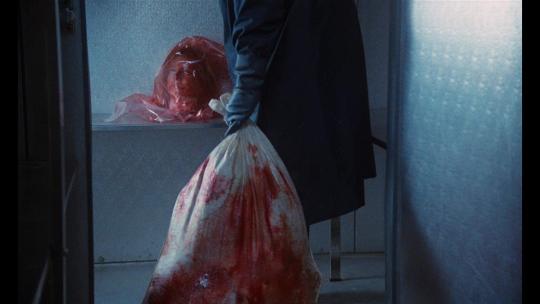
Actually, that’s the least interesting question Pieces raises. All the really interesting questions Pieces raises centre around why you are spending time watching something so ridiculously trashy. Also open to question is whether the people who made Pieces were catastrophically inept or whether the people that made Pieces just had utter contempt for their audience. There’s no getting around it; there’s no redemption under the flag of camp possible - Pieces is just garbage basically, possibly even the legendary hot garbage of which the young speak. And yet…and yet it’s impossible to look away. With its unholy, slapdash fusion of the giallo and the slasher Pieces creates an irresistible aesthetic car crash which even hardened fans of the bizarre can only boggle at. Choosing to do a slasher in the giallo manner is a pretty clever move, let’s face it.

That said, beyond the awesomely and unapologetically gross kills, it’s the only original thing about Pieces, everything else is slightly soiled hand-me-downs. Pieces has no shame; it is quite happy to caper about in someone else’s unwashed knickers. Often many people’s unwashed knickers at the same time. And just as Pieces is itself a wonky jigsaw composed of mismatched parts from other, better, movies the main cast of Pieces all look like cheap knock-offs of other, more famous people. Christopher George looks like a bad tempered George Segal, Linda Day looks like a sedated Loni Anderson, Paul L. Smith looks like Paul L. Smith but with a squint, Professor Brown looks like a constipated Chevy Chase wearing a creepy moustache, and Edmund Perdom looks like ex-Prime Minister Gordon Brown after a month at a health spa. There’s always something onscreen to entertain, because in Pieces there’s always something stupid onscreen.
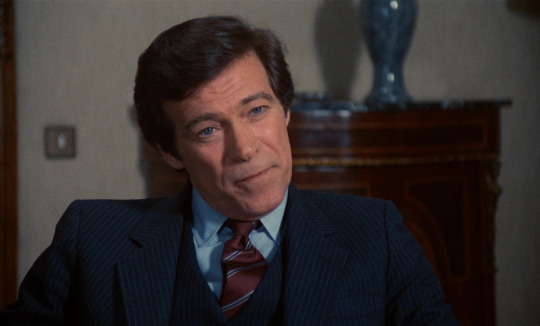
Deciding whether the stupidity in Pieces is intentional or accidental is trickier than you might think. On more than one occasion Pieces acts as a fantastic parody of the slasher form. The bit where the policewoman/tennis champion is attacked by a martial artist for absolutely no reason whatsoever is funnier and cleverer a lampoon than anything in the Scary Movie, uh, movies. As are the parts where a killer dressed as The Shadow carrying a giant chainsaw enters an elevator without raising any suspicion in the victim, or where the flamboyantly attired villain stalks a woman in a swimming pool despite his being clearly visible at all times. This stuff transcends brute idiocy and ascends effortlessly to the divinely satirical. But is it supposed to be? Does intention matter? At one point a woman is stabbed to death on a waterbed and the killer’s knife hits her head and bends; it’s a split second, but I doubt any other split second comes as close to encapsulating the entirety of Pieces within it so successfully. Then there’s the climactic build-up where the killer attempts to drug his victim into insensibility but gets the measure wrong, and has to make her another cup of coffee, including boiling the kettle, irritable spooning, huffy stirring etc. while the victim sits there unawares as the police close in. What with the imperilled blonde and the race against time it’s like some Hitchcockian set piece, but one by Barry Hitchcock, Alfred’s unknown, glue huffing cousin twice removed who writes only in crayon. And don’t even get me started on the final shot; if you’ve got enough self respect to burn, Pieces is worth watching for that final “???!!!???” moment alone. In the end I think that is the only sane, human response to Pieces: “???!!!???”.
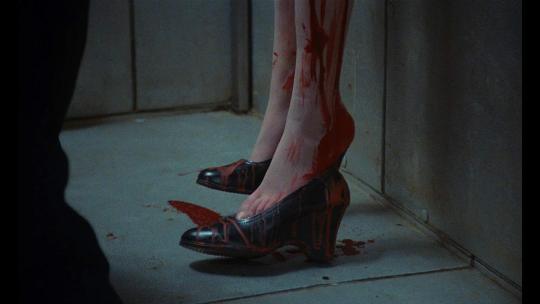
TL:DR: Pieces is stupid. Pieces is great. Pieces is stupidly great.
#pieces#movies#horror#giallo#slasher#spain#1982#the 1980s#juan piquer simon#mil gritos tiene la noche#christopher george#linda day#edmund purdom
1 note
·
View note
Photo

Mil gritos tiene la noche - Juan Piquer Simón 1982
7 notes
·
View notes
Photo

Mil gritos tiene la noche - Juan Piquer Simón 1982
5 notes
·
View notes